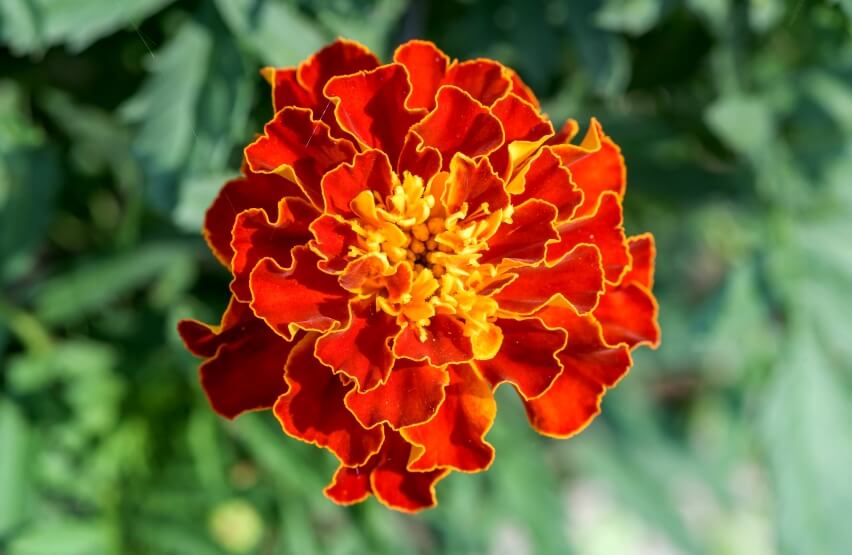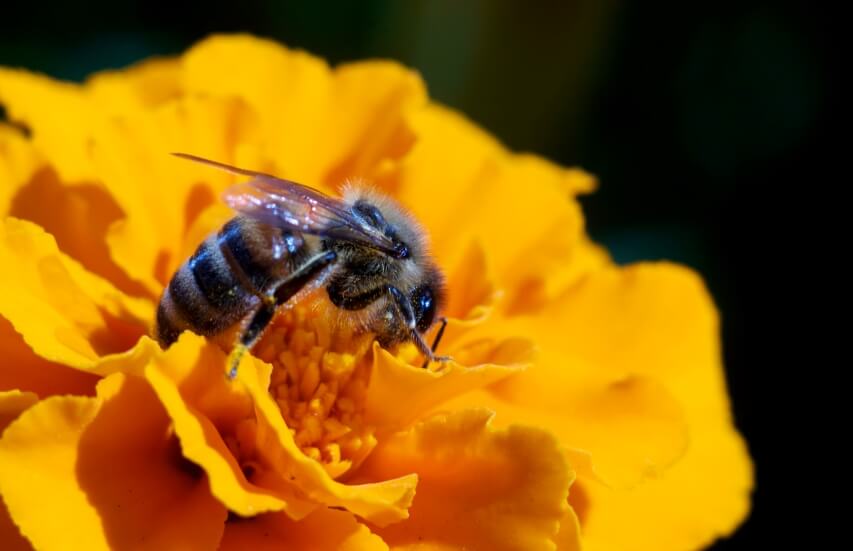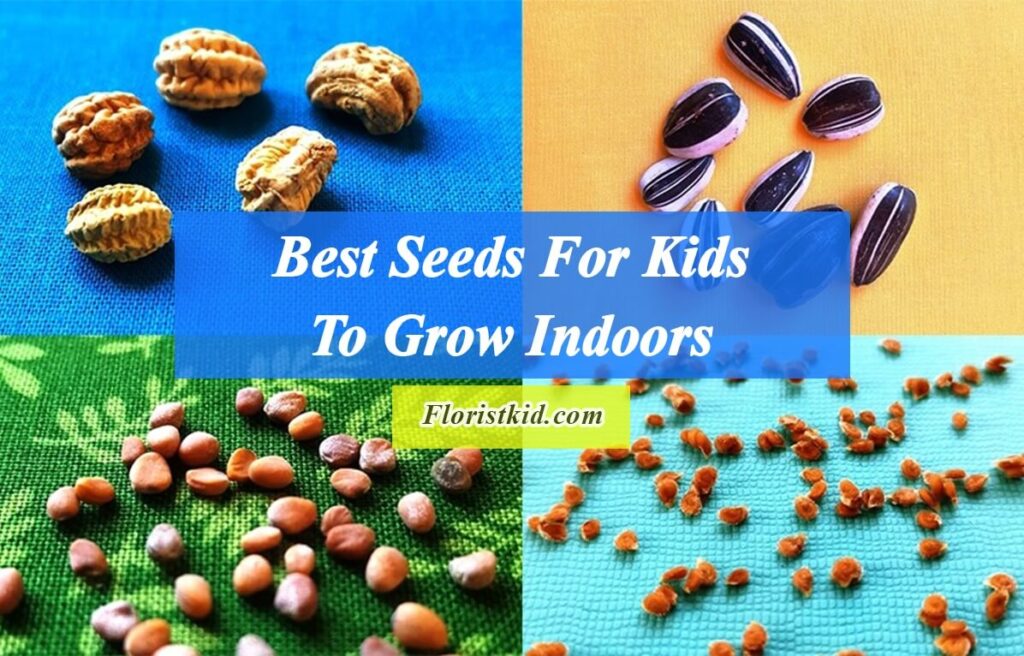One of the most well-liked annuals in the world is marigold. Marigold flowers frequently appear in garden areas and bring flashes of color to the surrounding foliage. Besides their visual qualities, marigold flowers provide several advantages in your garden.
Due to the numerous benefits of marigolds, this article will discuss Marigold flower benefits, and applications, making you want to plant one in your garden.
If you are interested in plant benefits, you can also read
<<Benefits Of Cactus Plants In The Home>> and <<Anthurium Plant Benefits>> articles.
About Marigolds
Marigolds produce single or multiple flowerheads that resemble daisies or carnations. Despite the fact that there are about 50 species of marigolds, most of them are one of the following [1]:
- Tagetes erecta (aka African marigolds, American marigolds, or Mexican marigolds): This species can grow to a height of 3 to 4 feet and has the tallest and most upright flowering form of all the marigold species. Due to their original habitats in Mexico and Central America, they can survive drought-like conditions.
- Tagetes patula (aka French marigolds): Compared to Tagetes erecta, French marigolds are often shorter, bushier, and more compact. They are graceful and striking, with relatively modest blossoms, and often reach heights of 6 inches to 2 feet. Compared to other Tagetes species, they are more adapted to wetter climates.
- Tagetes tenuifolia (aka signet marigolds): These little marigolds form a lovely edging plant and thrive in hot, dry environments. They hardly ever grow taller than a foot.
- Calendula officinalis (aka pot marigolds or English marigolds): This “marigold,” a native of southern Europe, is not a real marigold but is nevertheless a pretty companion plant. It is frequently cultivated with herbs in kitchen gardens because its colorful blossoms are delicious and have an acidic, peppery flavor.
Are Marigolds The Same As Calendula ?
Calendula, sunflowers, and marigolds are all members of the same plant family. According to National Geographic’s Guide to Medicinal Herbs, the scientific name of calendula is calendula officinalis, while the scientific name of marigold is tagetes,
Calendula is often called “pot marigold,” which leads to confusion between these calendula and marigold flowers. The calendula blossom has a flat bowl form and straight, slender petals. However, the marigold blossom has a half-dome form with short, wavy petals [2].
The amazing antioxidant, anti-inflammatory, and skin-healing benefits of calendula are well known. However, marigolds are most well-known for their advantages in gardens. Marigold petals are used cautiously by herbalists in teas, salves, and as food toppings, because they are harmful in big doses (or for those with a sensitivity).
Because of this, the majority of specialists advise against eating marigolds. Even yet, many people use small amounts of marigold petals to give food color and brightness.
Note: Before consuming marigolds, consult your doctor to ensure that they are suitable for your medical conditions, prescription drugs, and dietary supplements.
Marigold Flower Benefits
Marigold flower benefits are numerous. Here are some amazing marigold benefits in the garden and why you must grow one:
Easy To Grow
The first marigold benefit is that the most common varieties of marigolds are relatively simple to grow and are typically thought of as rapid bloomers from seed. They flower abundantly with little care and hardly ever cause their owners any major issues. They will flourish from spring till fall if planted in the appropriate location and given some simple maintenance.
Attracting Bees And Other Pollinators
Since marigolds draw bees, butterflies, and other beneficial pollinators, they are frequently found in garden beds. Your plants will thereby receive pollination, increasing their food production.
One of the best things about marigolds is that they bloom throughout most of the year, providing these pollinating insects with a rich source of food when other flowers have faded away.
Repelling Certain Pests
Marigolds’ ability to deter pests is only one of many incredible marigold benefits in the garden. The fact that marigolds deter whiteflies has scientific support. According to research from the University of Newcastle, marigolds shield tomato crops by naturally releasing the chemical limonene into the air.
The insects avoid the Marigolds and all other adjacent plants because they detest the scent of limonene. The whiteflies will not become resistant to limonene because it repels them without harming them, which is even better.
Other parasitic nematodes can also be managed using marigolds. Nematodes are tiny worms that feed on plant roots, causing critical plant processes to malfunction and ultimately causing the death of the plant.
According to studies, alpha-terthienyl, a poisonous substance released by the roots of marigold plants, prevents nematode eggs from hatching.
Remember that to take advantage of this benefit, marigolds must be planted approximately two months before planting your veggies.
Attracting Beneficial Predatory Insects
One of the best ways to naturally control pests in your garden is to plant marigolds. Because, Predatory insects like wasps and ladybugs are attracted to marigolds, which is another marigold benefit. Insect predators devour other insects that feed on fruits and vegetables.
Utilizing these predatory insects also lessens the need for chemical pesticides, to which insects have developed resistance. This is one of the most organic ways to keep harmful or sneaky pests away from your crops.
Edible Blossoms
Both leaves and petals of the marigold flower can be used in recipes. Cakes, soups, stews, braises, and grilled meats all benefit from the brilliant color that marigold petals bring to a variety of recipes.
The best-tasting marigolds include Tagetes tenuifolia (Gem marigolds), Tagetes lucida (Mexican mint marigold), and Tagetes patula (French marigold).
Adding Variety To The Landscape
Another marigold benefit is its aesthetic appeal. Marigolds come in bright orange, yellow, red, mahogany, and combination colors. Flowers can range in size from 6 inches (15 cm) to 3 feet (100cm) and can be single or double.
Natural Food Colorant
Lutein, a carotenoid pigment, is abundant in marigold blooms, which range from yellow to orange-red hues. The antioxidant properties of this pigment and its ability to safeguard eye health have given it increasing prominence.
Tagetes are used to color foods, including pasta, vegetable oil, margarine, mayonnaise, salad dressing, baked goods, candies, dairy products, ice cream, yogurt, citrus juice, mustard, and poultry feed [3, 4].
Therapeutic Properties
That’s not all marigold flower benefits. In its native region, Tagete minuta is also widely used medicinally as a condiment and herbal tea, as well as a favorite traditional folk remedy and in complementary and alternative medicine.
Tagete minuta has several medical benefits. Some of these benefits are as below:
- Remedy for colds
- Good for respiratory inflammations
- Good for stomach problem
- Anti-spasmodic
- Anti-parasitic
- Anti-septic
- Insecticide
- Sedative
It can be used to treat skin infections as well as chest infections, coughs, and catarrh by opening up the airways, promoting mucus movement, and removing congestion. Additionally, it promotes the recovery of cuts, bruises, calluses, and bunions [4].
















